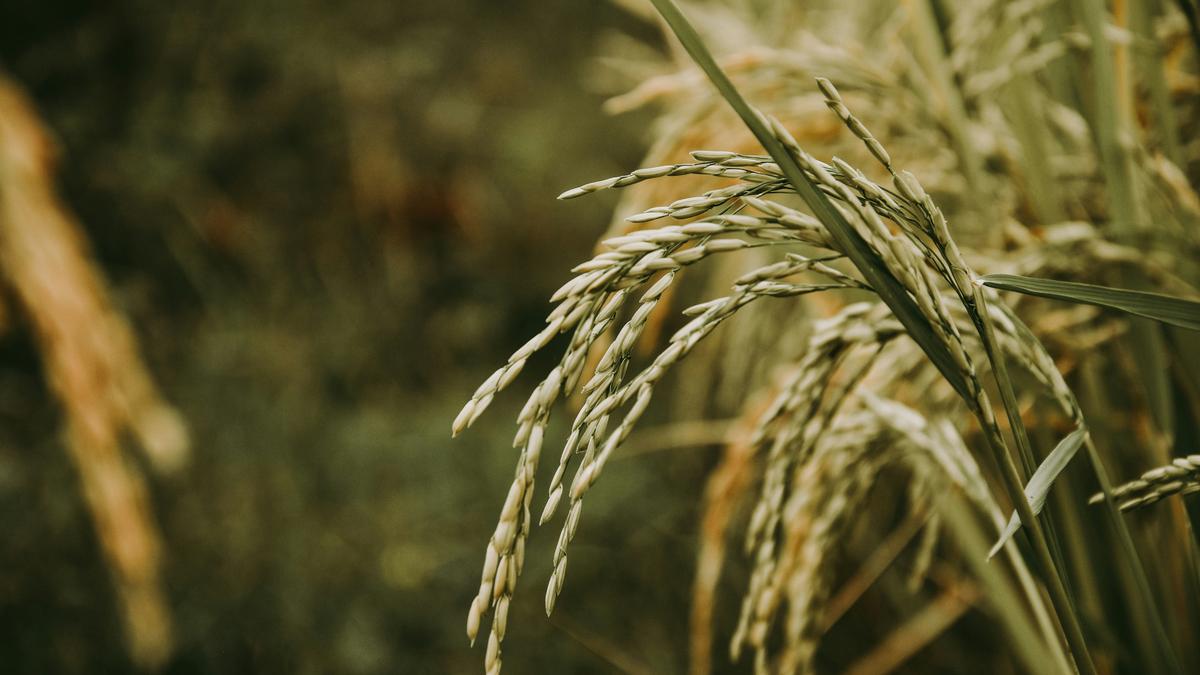Asian cultivated rice (Oryza sativa L.) is one of the most important food crops in the world. Representative image.
| Photo Credit: Sandy Ravaloniaina/Unsplash
Scientists have assembled a first of its kind ‘pangenome’, a kind of reference genome, by stitching together key parts of genomes from 144 varieties of wild and cultivated varieties of rice from Asia. Much like the Human Genome Project in 2003 mapped genomes from a range of individuals, expressing the genetic diversity of the human species, the rice pangenome allows researchers to develop new rice cultivars and introduce new traits for disease-tolerance as well as resilience against climate shocks.
Rice is staple for nearly two-thirds of the globe. It is the primary crop grown in India over the monsoon months of June-September. In 2024-25, India produced a record 220 million tonnes of rice over 51,000 ha with an average yield of 4.2 tonnes/ha. Several studies over the years have warned that rising temperatures due to climate change would not only affect yields but also increase arsenic uptake among several rice varieties. India’s average temperature has increased by 0.7º C since 1901. 2024 was the hottest year on record, with the average minimum temperature 0.9º C above the long-term average.
Earlier this month, the Indian Council of Agricultural Research (ICAR) announced the development of two varieties of genome-edited rice, Samba Mahsuri and MTU 1010, that reportedly promise higher yields and better drought resistance. These however are yet to be released into farmer fields.
To develop the pangenome, the scientists — nearly all associated with the Chinese Academy of Sciences — report undertaking a “deep analysis of complex gene flows” both within cultivars (domesticated) and between cultivars and wild rice, highlighting the evolutionary and domestication pathways of various rice types. This study reinforced support for the hypothesis that all Asian cultivated rice had an evolutionary origin from a wild variety called Or-IIIa, the ancestor of japonica.
Asian cultivated rice (Oryza sativa L.) was domesticated from its wild progenitor O. rufipogon, and is one of the most important food crops in the world. Or-IIIa is a variant of O. rufipogon.
While reference genomes of a species generally confine themselves to identifying the characteristic genes that make up a species, a ‘pangenome’ has the common genes as well as maps out the unique genes found in the individual rice varieties. It presents a more complete understanding of the genetic variation present in rice.
Primarily using ‘PacBio high-fidelity’(HiFi) sequencing technology and computational methods, their analysis revealed 3.87 billion base pairs of novel genetic sequences absent from the single acknowledged reference genome, O sativa ssp japonica.
They identified 69,531 genes collectively spanning the pangenome, with 28,907 core genes and 13,728 wild-rice-specific genes.
Population genetics studies have earlier shown that ancient japonica rice was first domesticated from the O. rufipogon group IIIa (Or-IIIa) population in China, and that indica rice was subsequently domesticated when ancient japonica spread southward and westward in Asia and crossed with the local O. rufipogon group I (Or-I) population.
Another key finding of the study was that of the 69,531 genes identified, about 20% were specific to wild rice. These genetic resources can improve understanding of rice environmental adaptation, phenotypic plasticity and regeneration potential. “By bridging the gap between wild and cultivated rice genetics, our study opens new avenues and provides useful wild rice resources for developing superior and more productive rice varieties,” the authors note.
“These improved varieties could incorporate valuable traits from wild rice species, potentially enhancing their resilience to rapid environmental changes.”
Published – May 09, 2025 07:30 am IST
